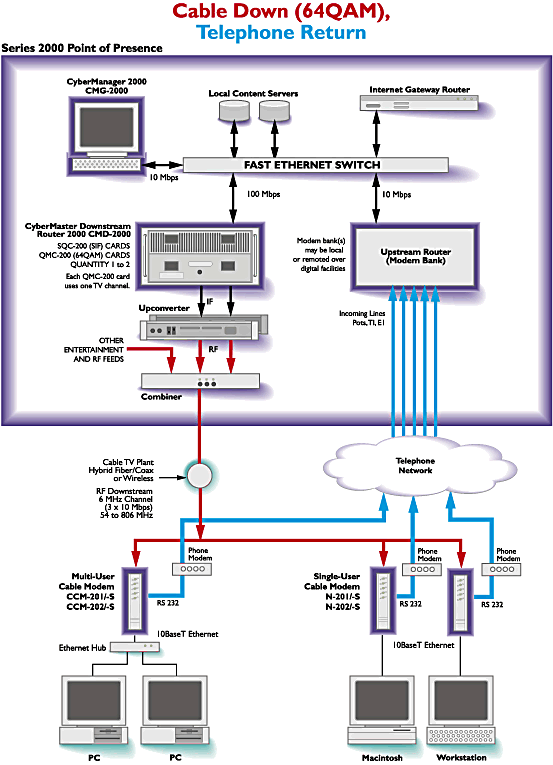Issues involved in Cable modems
Technology developments suggest that real competition will emerge in local
exchange facilities as well as other telecommunications markets. For all of this
technology evolution to happen, though, there are still a number of issues that
need to be resolved. These issues are not only technical but also economic and
regulatory.
- network management - we must be able to remotely monitor and manage
the functionality of customers' modems on the network to ensure network
reliability.
- data layer encryption- this will provide a level of network security
beyond what the end user installs on his/her own PC.
- cable modem operations- the cable modem should be conveniently
co-located with the user's PC and should have various operational features like
power level control for transmission, the ability to support more than one PC
on a Local Area Network, and the ability to detect its location in the network.
- telephony return option- for smaller cable operators who haven't
upgraded their cable network to full two way capability the option exists to
use the telephone as the return path for Internet traffic. Here, the customer
still gets the full benefit of high speed Internet reception over cable, but
uses the telephone line for upstream data.

- price- cable modem cost must be comparable to that of a high end
telephone modem.
The key technical issues are:
- fostering an interoperable architecture for competing networks, and;
- reaching agreement on interindustry standards.

